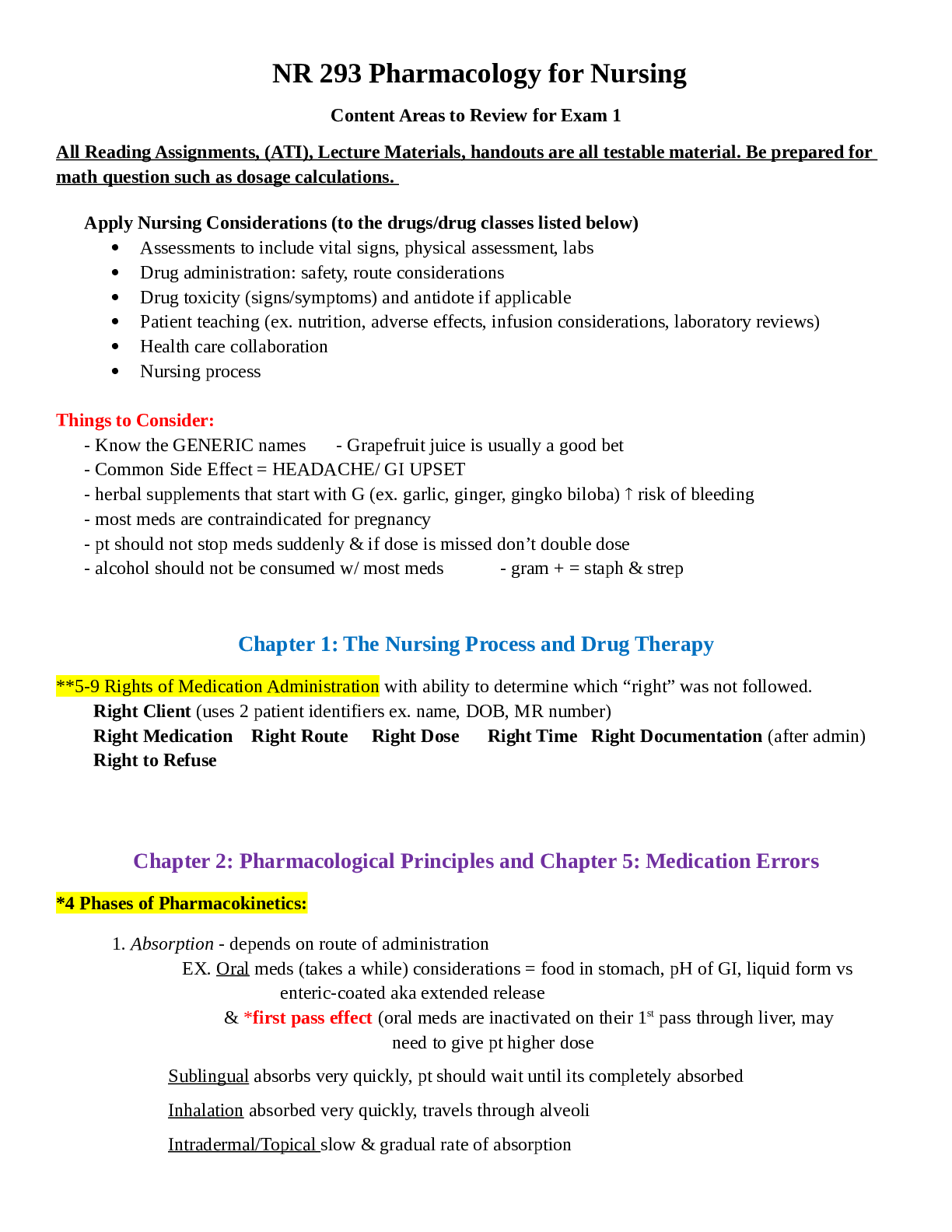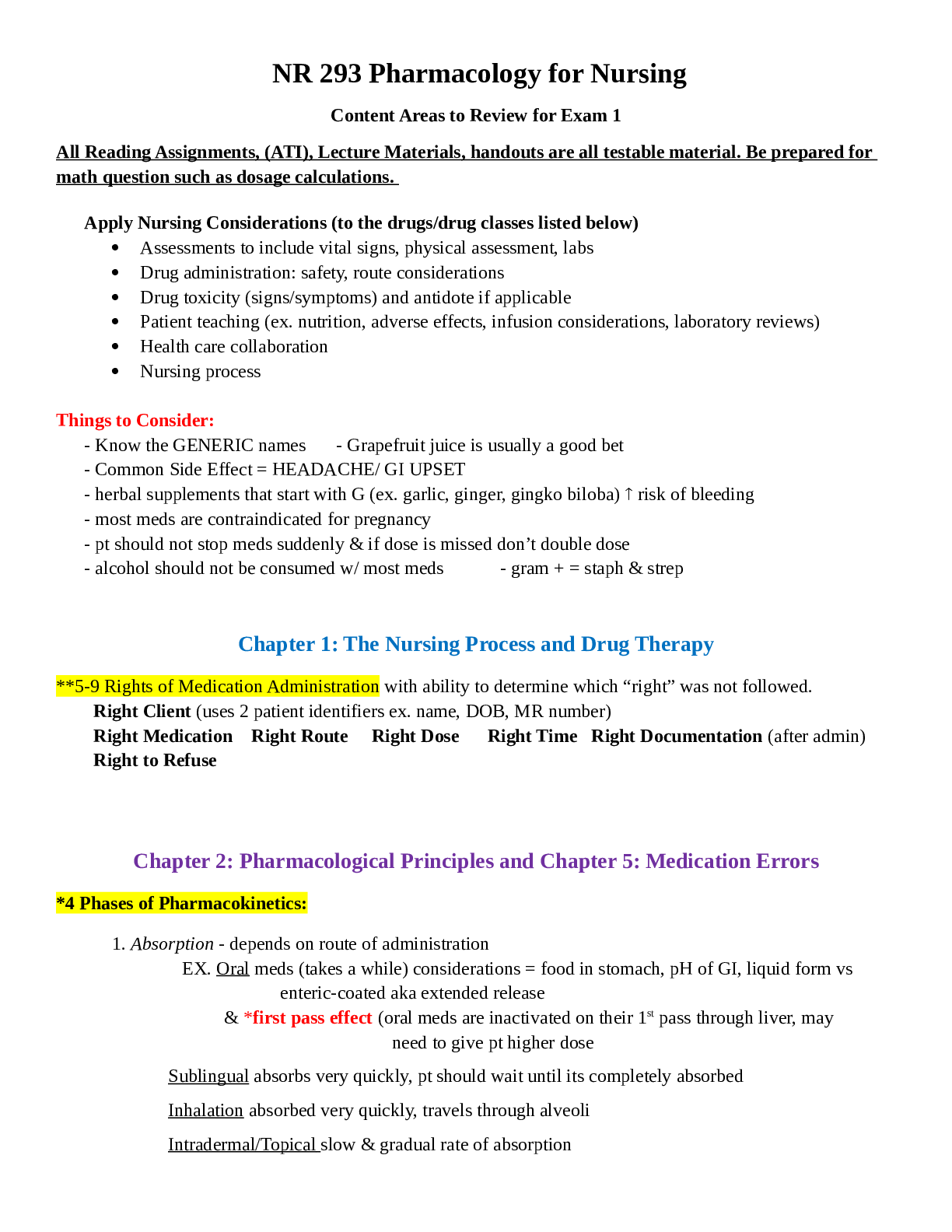All Reading Assignments, (ATI), Lecture Materials, handouts are all testable material. Be prepared for
math question such as dosage calculations.
Apply Nursing Considerations (to the drugs/drug classes listed below)
Assessments to include vital signs, physical assessment, labs
Drug administration: safety, route considerations
Drug toxicity (signs/symptoms) and antidote if applicable
Patient teaching (ex. nutrition, adverse effects, infusion considerations, laboratory reviews)
Health care collaboration
Nursing process
Things to Consider:
- Know the GENERIC names - Grapefruit juice is usually a good bet
- Common Side Effect = HEADACHE/ GI UPSET
- herbal supplements that start with G (ex. garlic, ginger, gingko biloba) risk of bleeding
- most meds are contraindicated for pregnancy
- pt should not stop meds suddenly & if dose is missed don’t double dose
- alcohol should not be consumed w/ most meds - gram + = staph & strep
Chapter 1: The Nursing Process and Drug Therapy
**5-9 Rights of Medication Administration with ability to determine which “right” was not followed.
Right Client (uses 2 patient identifiers ex. name, DOB, MR number)
Right Medication Right Route Right Dose Right Time Right Documentation (after admin)
Right to Refuse
Chapter 2: Pharmacological Principles and Chapter 5: Medication Errors
*4 Phases of Pharmacokinetics:
1. Absorption - depends on route of administration
EX. Oral meds (takes a while) considerations = food in stomach, pH of GI, liquid form vs
enteric-coated aka extended release
& *first pass effect (oral meds are inactivated on their 1st pass through liver, may
need to give pt higher dose
Sublingual absorbs very quickly, pt should wait until its completely absorbed
Inhalation absorbed very quickly, travels through alveoli
Intradermal/Topical slow & gradual rate of absorption
IM absorption depends on solubility of the med IV is immediate absorption
2. Distribution (med travels to site of action) - binding proteins are req. [ex. albumin]
3. Metabolism (med is activated or broken down) - due to enzymes; primarily happens in liver &
kidneys, lungs, bowel, blood
Infants - organs are immatures so metab. doesn’t happen effectively = high risk of
toxicity
Older adults’ liver/kidneys dysfunction impacts metab. & slows it down also higher
risk for toxicity
4. Excretion - primarily happens through kidneys
Minimum Effective Concentration (MEC) /Therapeutic Index
- we want to attempt to keep plasma levels between the minimum effective concentration & toxic
concentration
- certain meds have a high therapeutic index (TI) aka big range between MEC & toxic concentration
-other meds have low TI making therapeutic level & toxic level very close together (ex. vancomycin)
there’s a risk for toxicity so blood draws are req. to check trough & peak levels
assuring you’re not getting into toxic range
Read More


